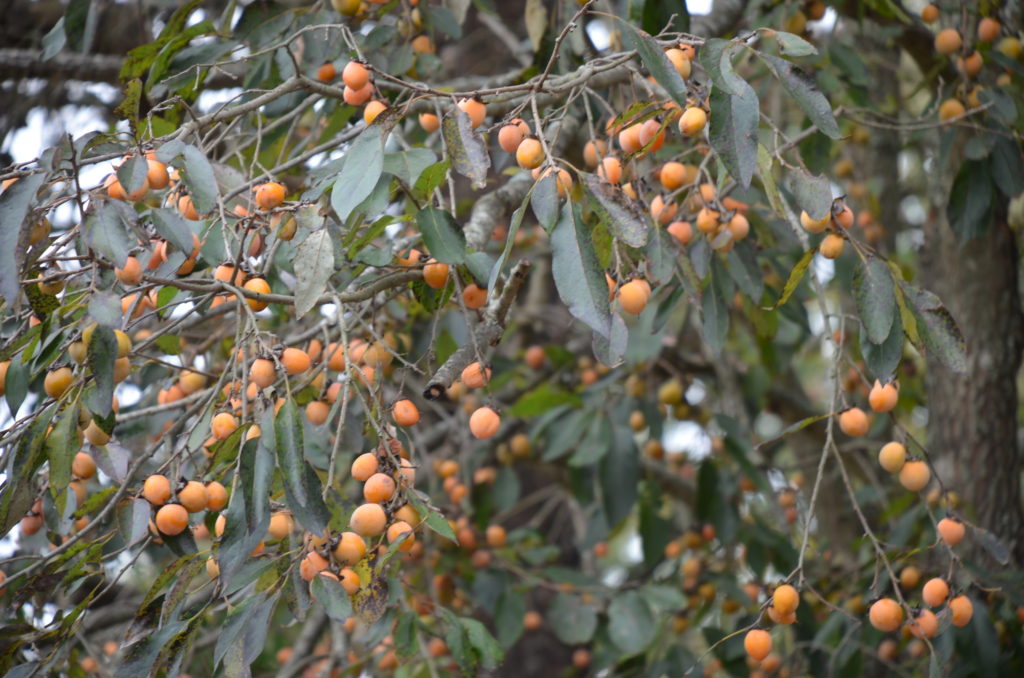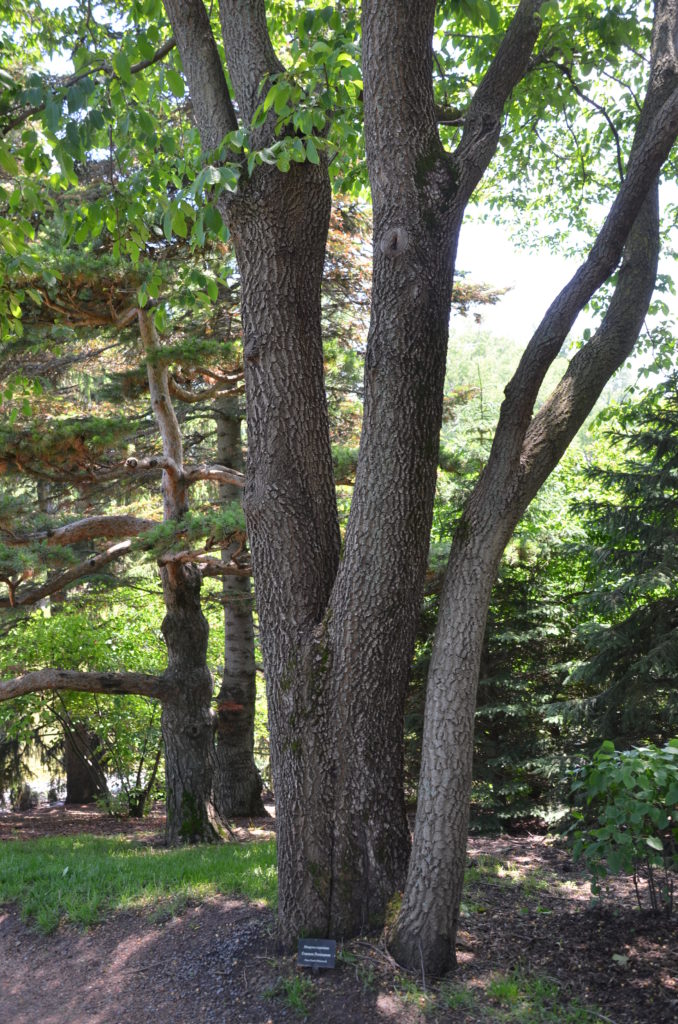
Persimmon (Diospyros virginiana) is a deciduous U.S. native that grows 35 to 60 feet tall and 25-35 feet wide (USDA hardiness zones 4 to 9). Mature trees have a rounded oval crown. Ovate to elliptic, 2-6 inch long leaves, alternative along the stem, are glossy dark green above. Autumn leaves turn yellowish-green, infrequently reddish purple.
Persimmons grow in a wide geographic range from southern New England to the Midwest and south to Florida and Texas. Trees are usually dioecious (separate male and female trees), although some trees have perfect flowers. Tree roots tend to sucker prolifically and form almost impenetrable thickets. Its distinctive thick, dark gray bark is broken into rectangular blocks.
Persimmons are not fussy regarding site selection. Trees grow in average, dry to medium, well-drained soils, and in full sun to partial shade. Established trees are drought tolerant. Removing suckers by mowing around a tree(s) is the easiest practice. Female trees need a male pollinator in order to set fruit.
Fragrant, white to greenish-yellow flowers which are difficult to spot, bloom in late spring, with the male flowers appearing in clusters and the female flowers appearing solitary. Edible persimmon fruits, about 1-2 inches across, mature in fall, usually following the first hard frost to an orange to reddish-purple color, and may persist on the tree into winter.
Persimmon fruit is quite astringent when green, but upon ripening becomes sweet and may be eaten off the tree. The large seeds are surrounded by sweet orange flesh, which is edible and tasty eaten fresh or used in syrups, jellies, ice creams or pies. Persimmon leaves can be used to make or flavor teas.
Persimmon fruits are globose, with orange-gray, bitter skin and four large sepals at the top. The fruits are eaten by many wild animals, but can be poisonous to horses if eaten in excess. The wood of this hardwood tree is used to make golf club heads, billiard cues and shoe lasts.


 Posted in
Posted in 
